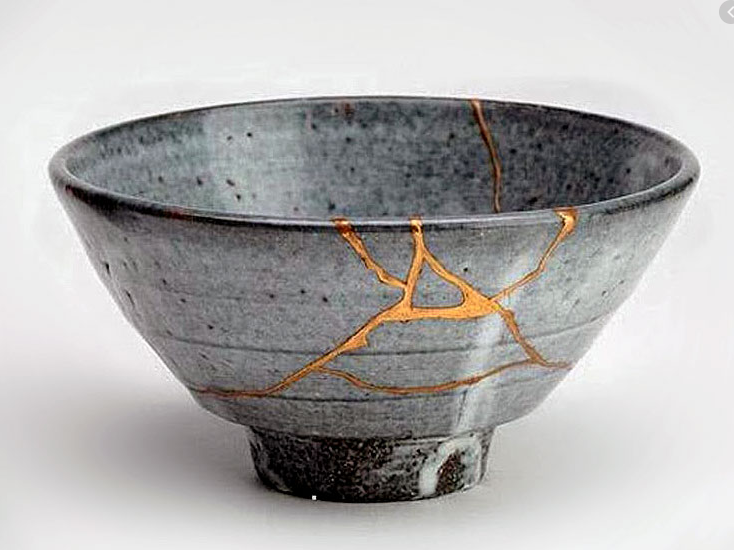In William Golding’s Lord of the Flies, there is a moment that never leaves me: Piggy’s glasses shatter. It is more than an accident of rough play, it is the collapse of vision, the loss of clarity, the silencing of one who saw differently. In my formative years, as I was slowly pushed to the margins of the classroom, I asked my teacher if they too were not part of the oppression that mocked Piggy and left him exposed. The question was met with silence. Yet that silence has never left me.

The broken window theory (Wilson & Kelling, 1982) once argued that neglect of small signs of disorder encouraged greater crime. But what if we turn this theory on its head? What if the real disorder lies not in a community failing to mend a pane of glass, but in those who profit from telling us that the pane is already beyond repair? We are being asked to inhabit a worldview that assumes fracture is permanent, that hope is naïve, that care is weakness. I cannot stand and watch while this false narrative hardens into truth.
Now, decades later, I return to that broken lens as a metaphor for the world we are made to see through today. We are told that everything is fractured, that society is a broken window, that trust is irreparable, that division is the natural state of human beings. But I refuse this. I am not here to accept distortion as the ground of life. I am here, as the Hobopoet, to call out the manipulation that makes us look at one another through shattered lenses designed to breed suspicion and harm.
Consider the Johari window (Luft & Ingham, 1955). Once a model for self-understanding and mutual recognition, it too is now cracked: the “open” self is increasingly colonised by performance, the “hidden” self-consumed by shame, the “unknown” drowned in noise. Or think of Brookfield’s lenses (1995), through which educators were urged to question assumptions, the lens of students, colleagues, theory, and self. What happens when each of these is distorted? When the Nursing students voice is tokenised, the colleague silenced, theory twisted by ideology, and the reflective self-suffocated under bureaucratic demand?
The social eye, I fear, is being trained to see through fracture, not through clarity. A culture of polarisation, fuelled by political intention, insists that to belong we must choose sides. Dialogue is replaced by positioning; listening gives way to shouting. This is not accident, it is design. The greatest violence is not the shattering of glass but the insistence that we must now accept only fragments.
This essay follows directly from my earlier piece, Trapped in Equilibrium: Game Theory, Violence, and the Collapse of Care (Delahunt, 2025). There I argued that the logic of violence creates a false equilibrium where care collapses under the weight of strategic competition. Here, I suggest that the fractured window is its companion metaphor: not only are we trapped in games of mistrust, but we are also forced to look through broken lenses that distort the very possibility of care.
Yet as a nurse, as an academic, and as a poet, I cannot stop at lament. To care is to refuse despair. Trauma teaches us that brokenness does not mean the end of meaning, it means the beginning of repair. In emergency departments, I have witnessed bodies fractured and lives torn apart, and yet I have also seen how the smallest act of recognition, a hand held, a name spoken, a moment of stillness becomes a site of mending. Why should society be any different?
Repair is not about restoring some mythical whole. Like kintsugi, the Japanese art of golden repair (Koga, 2016), the act of mending can honour the fracture, trace its lines with care, and insist that brokenness itself can hold beauty. To repair a window is to let light back in, even if the scars remain visible.

The Hobopoet believes this: strip away fear and what remains is the possibility of mediation, of conversation framed not on suspicion but on love. Love not as sentimentality, but as what bell hooks (2000) called “a practice of freedom.” Love as the radical, difficult act of seeing one another not through broken glass but through eyes willing to meet across fracture.
This vision is not mine alone. In a recent podcast conversation with Ruth Germain (Creativity is like a Compass, 2025), I explored how creativity itself becomes a therapeutic act, a way of mending trauma through art, story, and community. Together we spoke of poetry as a compass, pointing toward hope even in moments of despair. That dialogue, like this essay, insists that brokenness can be a starting point for transformation.
So I ask you:
Who profits when we are forced to look through broken lenses?
Who benefits when our social windows are left unrepaired?
And what might happen if, together, we dared to mend?
I am not willing to leave the window broken. My work, whether in the Poetic Nursing Heart, in the Butterfly Farmer project, or in the conversations Ruth and I hold, is a refusal to accept distortion as destiny. I will carry these shards with me, yes, but I will also trace them with gold.
For the broken lens does not have to be the final story. It can be the first crack of light.
‘The wound is the place where the light enters you’. Rumi
References
Brookfield, S. (1995). Becoming a critically reflective teacher. San Francisco: Jossey-Bass.
Delahunt, T. (2025). Trapped in equilibrium: Game theory, violence, and the collapse of care. Poetic Nursing Heart Blog. Available at: https://blogs.canterbury.ac.uk/partnersinlearning/trapped-in-equilibrium-game-theory-violence-and-the-collapse-of-care/
Golding, W. (1954). Lord of the Flies. London: Faber and Faber.
Germain, R. & Delahunt, T. (2025). Creativity is like a compass [Podcast]. Reflective Ruth Consultancy. Available at: https://www.reflectiveruthconsultancy.com/podcast-1/episode/52823905/sowhocaresanyway-e28-creativity-is-like-a-compas
Hooks, b. (2000). All about love: New visions. New York: William Morrow.
Koga, K. (2016). Kintsugi: The art of repair. Tokyo: Seigensha.
Luft, J., & Ingham, H. (1955). The Johari window: A graphic model of interpersonal awareness. Proceedings of the Western Training Laboratory in Group Development. Los Angeles: UCLA.
Wilson, J. Q., & Kelling, G. L. (1982). Broken windows: The police and neighborhood safety. Atlantic Monthly, 249(3), 29–38.
 The Poetic Nursing Heart
The Poetic Nursing Heart Tom Delahunt
Tom Delahunt 1314
1314


